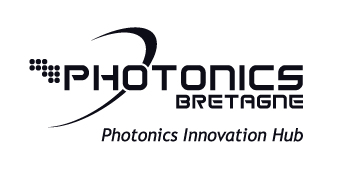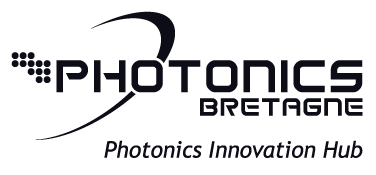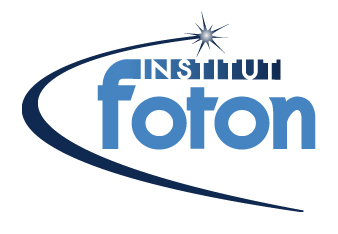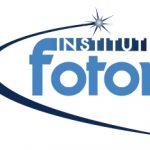PhD open position in the area of thin film technologies and optical properties (H/F)
Control of the mechanical stress in SiN based material for the development of advanced photonic devices
Starting date : October 1st, 2023
Duration : 36 month
Supervisor : Pr. Peter Mascher (McMaster University), Christophe Levallois and Pr. Jean-Pierre Landesman(Rennes)
Project description :
Today, designing high-performance optical filters or photonic circuits is still
challenging. The efforts made by academics and industrials to filter light and/or confine it within waveguides continue through many applications. As examples, it can be mentioned optical communications between microelectronic chips, or miniaturized optical components (spectrometer, biosensors) for lab on chip application.
Due to its low optical losses within visible and near IR wavelength, by its optical index comprised between the ones of semiconductors and SiO2, but also for its compatibility with CMOS technologies, SiN (silicon nitride) is known as a key material in integrated photonics or as a passivating and anti-reflective layer in the field of photovoltaics. However, when a low-temperature CVD process is used to deposit SiN, mechanical stresses in the layer can be
tuned and it can induce significant local modifications of its optical properties. This is also the case for the layers underlying the SiN. This photo-elastic effect observed and demonstrated in different material systems, could be considered as a detrimental effect since the residual stresses in the layers of the photonic devices or circuits can affect the propagation properties of the guiding structures. However, recently in the framework of a first collaboration between McMaster Univ. in Canada and the FOTON Institute in France, some advances have been achieved to control and understand this mechanical stress inside
SiN layers [1]. Now, these preliminary studies pave the way to tune finely the SiN optical properties to optimize such layers for future passive optical devices.
In the framework of this new thesis, the objective will be to start with simple photonic devices: resonant optical filter, straight waveguide. After characterization of the optical losses within SiN material, the idea will be to move towards more complex devices requiring more advanced design and technological fabrication processes. However, the development of innovative photonic devices is not the only aspect of the thesis. It will be also necessary to
study the effects of some deposition parameters, which have not been investigated during the 1 st cotutelle thesis. It will be mainly conducted on the ECR-PECVD system available at McMaster University. As part of this methodological approach, it is therefore necessary that the thesis begin at McMaster in Canada.
In summary, the approach of this co-supervised thesis is based on the following path:
- The 1st part of the thesis will be conducted in Canada to carry out studies focused on the SiN material deposited in ECR-PECVD, the characterizations of which will be carried out jointly with McMaster and the FOTON Institute. In parallel with these experimental studies, the
PhD student will rely on the multi-physics models of COMSOL and the analytical models already developed in the previous thesis to design the photonic structures that can be fabricated within FOTON Insitute and the nanoRennes platform during the 2nd part of the thesis. - The 2nd part of the thesis will be based mainly on the fabrication and characterization of passive photonic devices relying on the photo-elastic effect. At this stage, different valuable devices could be studied, but after analysis of simulation works and the technical feasibility of such devices, only some of them will be investigated.
- As conducted in the previous cotutelle thesis, the follow-up of the doctoral student’s work will be done in consultation with Pr Peter Mascher (Univ. McMaster) during exchanges allowing regular updates through videoconferences. The experimental techniques to be used
and the analysis of the results will thus be discussed regularly.
[1] “Strain engineering in III-V photonic components through structuration of SiNx films”, B. Ahammou, A. Abdelal, J-P. Landesman, C. Levallois, Peter Mascher, Journal of Vacuum Science & Technology B, Nanotechnology and Microelectronics 40(1), 012202, 2022
Facilities :
For the Canadian side, the studies will be mainly based on the analysis of SiN through different experimental techniques available at McMaster Univ. to make some correlations between the optical and mechanical properties of SiN: Ellipsometry, optical profilometry, electron microscopy or Fourier transform spectrometry (FTIR). For the French side, at the FOTON institute, we will use optical set-up developed recently: DOP measurements (Mapping of the degree of polarization of photoluminescence), loss measurements in the waveguides, but also standard characterization techniques for the SiN material analysis. As
part of the fabrication of SiN-based devices, the micro-nano fabrication tools of the nanoRennes platform will be also used. Different numerical or analytical simulation tools will be also available within the FOTON Institute or at McMaster. Other potential means of characterization could be also considered, at a national or an international level, through the collaboration network of the supervisors.
Qualifications :
M.Sc. or engineering diploma with skills in at least one of the following areas:
- Physics of semiconductor materials and devices
- Optical characterization
- Thin film growth and processing
Contacts :
Peter Mascher: mascher@mcmaster.ca
Christophe Levallois : christophe.levallois@insa-rennes.fr
Jean-Pierre Landesman: jean-pierre.landesman@univ-rennes1.fr






